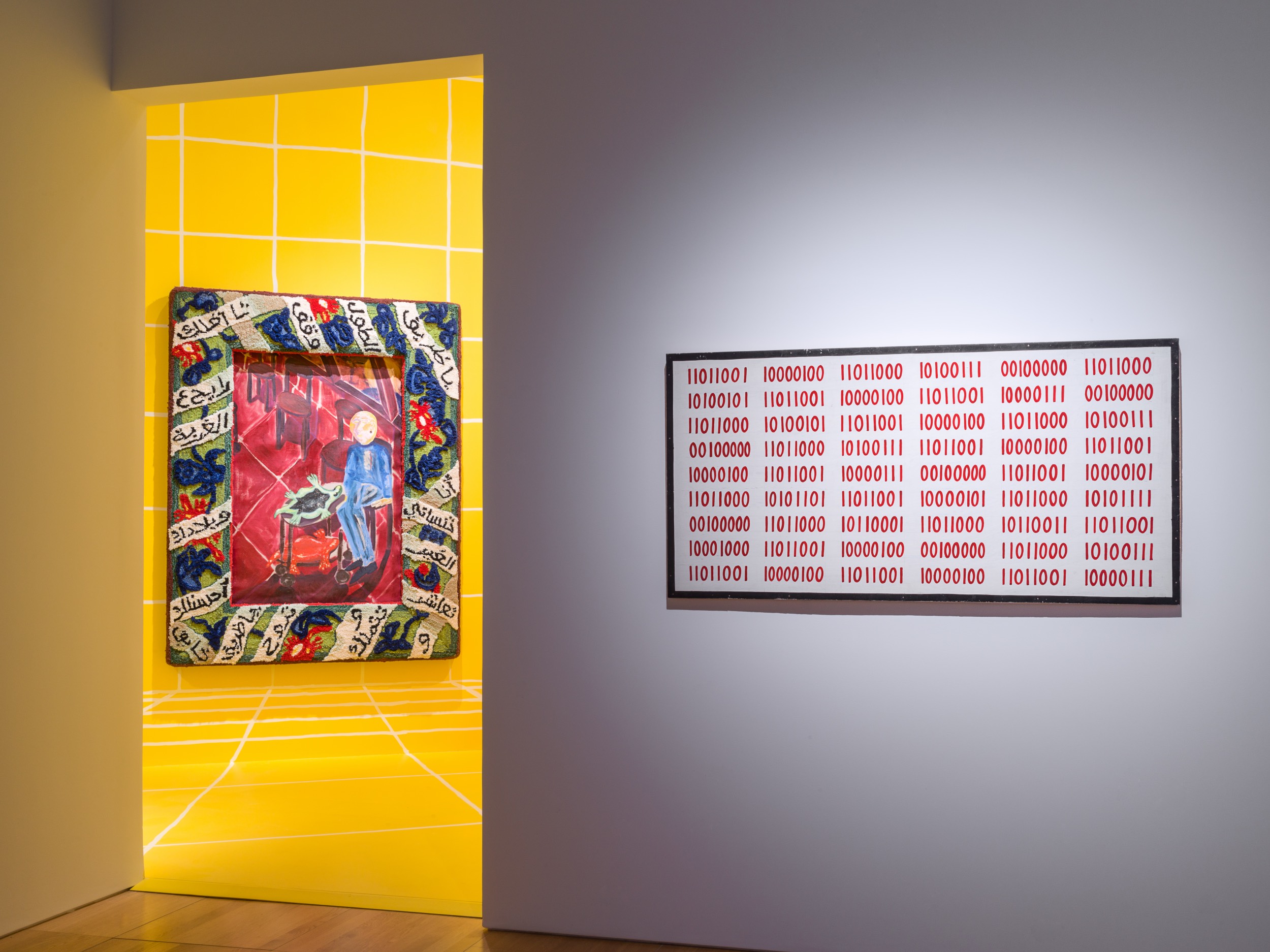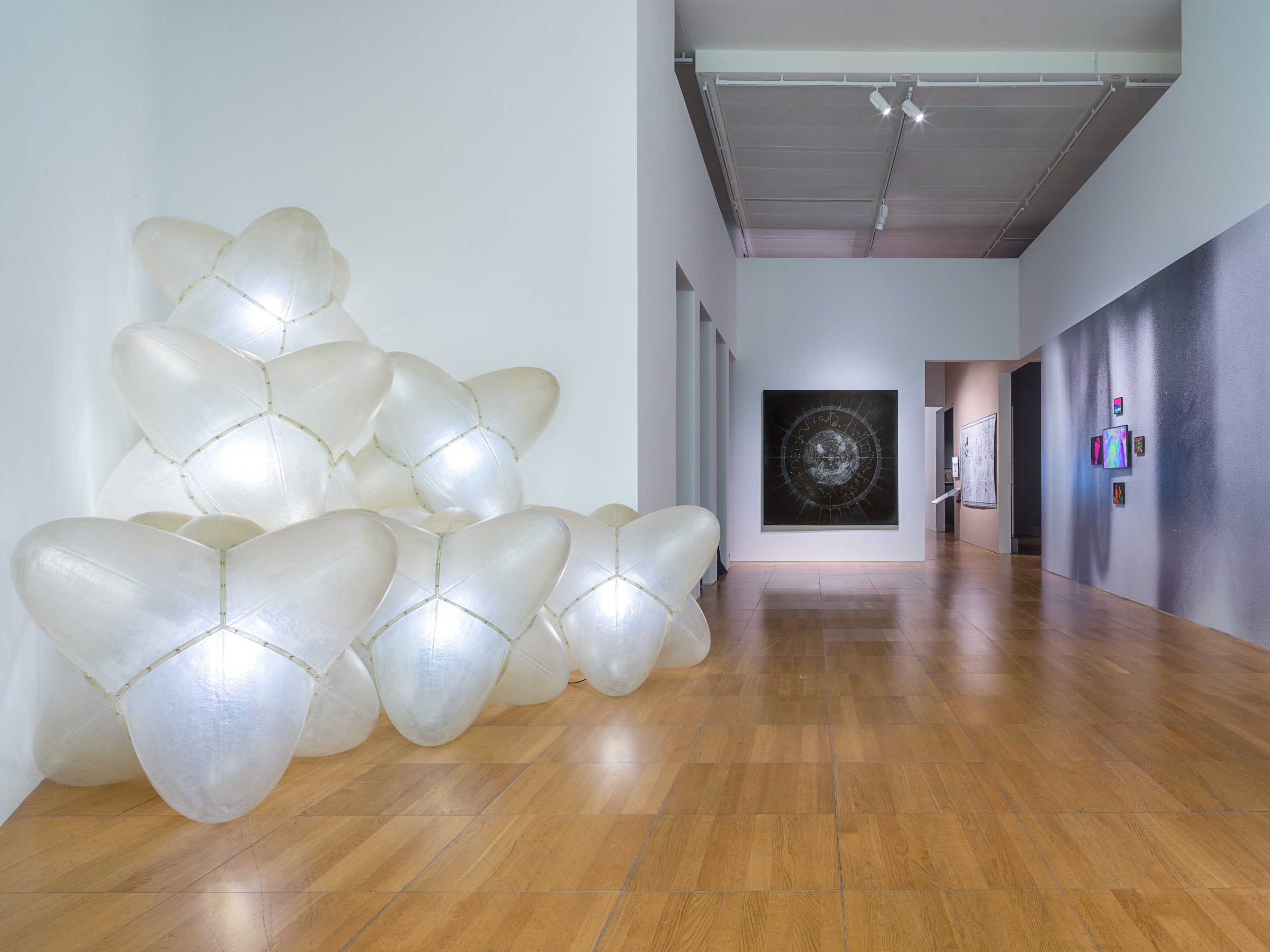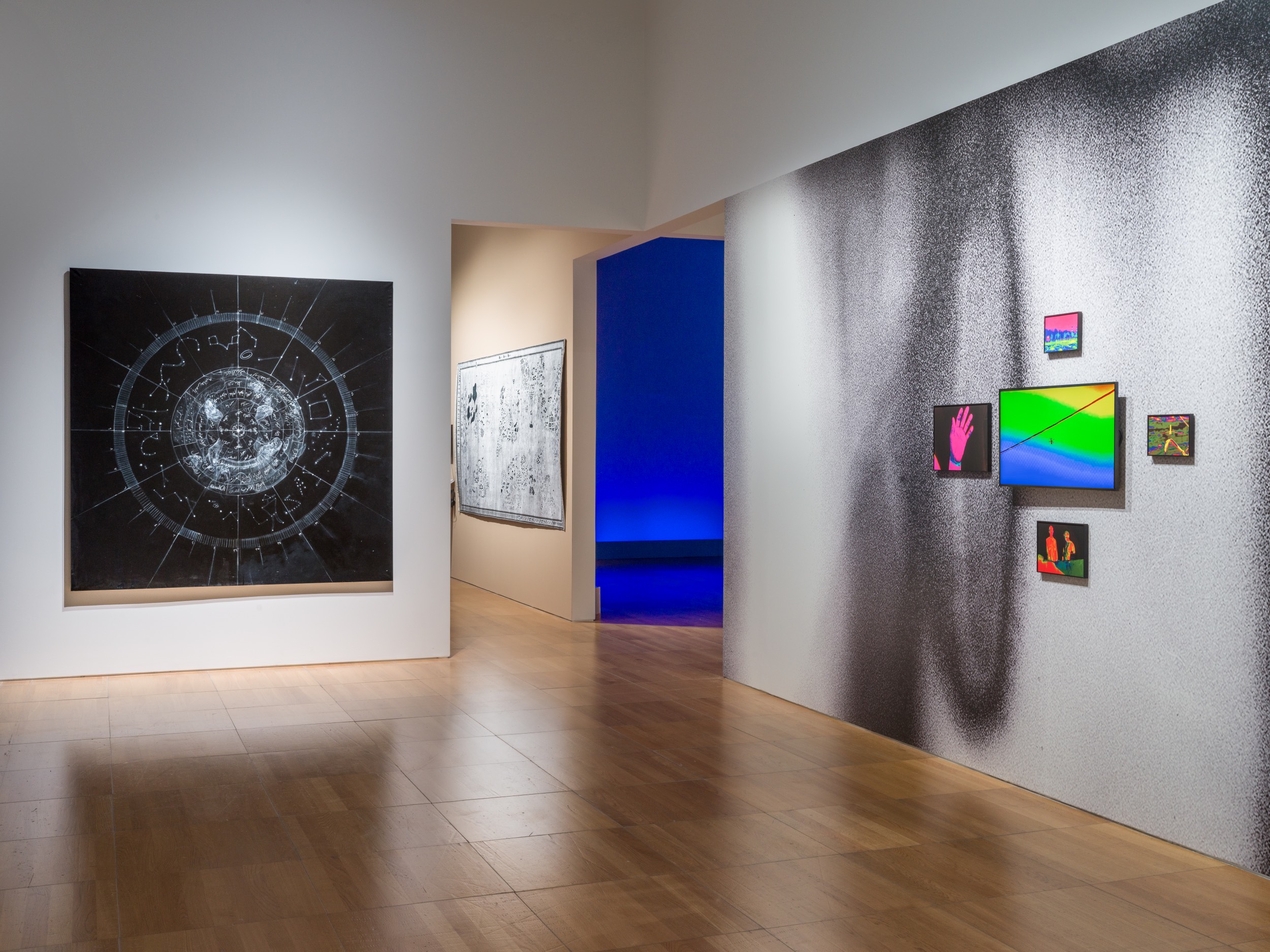Shows
The First Gulf Quinquennial is Now Open at NYUAD Art Gallery

*presented by NYUAD Art Gallery
October 1 – December 8, 2024
Between the Tides: A Gulf Quinquennial
New York University Abu Dhabi Art Gallery
Abu Dhabi
Organized by the New York University Abu Dhabi Art Gallery, “Between the Tides: A Gulf Quinquennial” is a non-comprehensive survey exhibition focusing on practices that are directly or tangentially based in the Gulf. It features 21 artists and collectives from across the Gulf Cooperation Countries (GCC), which comprises the United Arab Emirates, the Sultanate of Oman, the State of Qatar, the State of Kuwait, the Kingdom of Bahrain, and the Kingdom of Saudi Arabia. Set to recur every five years, this first iteration of the quinquennial showcases works across the fields of visual arts, architecture, and design, featuring painting, video, installation, photography, and sculpture, made and shown between 2019 and 2024. This provisional five-year snapshot of visual production with a regional focus was curated by Maya Allison and Duygu Demir, together with curatorial interlocutors: artist, curator and researcher Abdullah Al-Mutairi, artist and founder of Safat Studios Aseel AlYaqoub, both from Kuwait, in addition to architect Ali Karimi from Bahrain and artist Ayman Zedani from Saudi Arabia. The exhibition also features work by AlYaqoub, Karimi and Zedani. The exhibition’s identity design was also treated as an artwork: commissioned to Mohammad Sharaf, the variety that the exhibition presents is found in the design’s ample use of typefaces, riffing on the GCC's logo as well as loosely referencing a map of the region.

Installation view: ABDULRAHIM ALKENDI‘s Shahada, 2024, and FAISSAL EL-MALAK’s The Lizard in my Dream, 2022, at NYUAD Art Gallery, Abu Dhabi, 2024. Photo by Altamash Urooj. Courtesy NYUAD Art Gallery.
The title of the first iteration, “Between the Tides,” is a nod to an understanding of time as cyclical, referring both to the regional foregrounding of lunar rhythms and to the cadence of the exhibition itself, which intends to register and re-present projects and ideas that left a mark. The reference to the ebb and flow of tidal movements also suggests a relocation of matter—such as water and sand—that can be revelatory or concealing. Be it physical or symbolic, and whether things are sequestered from view or laid bare, intertidal zones are vibrant, vulnerable, and resilient, like the thinking and making behind the projects presented here. While the practices included reflect a diverse array of interests and methodologies, spanning burgeoning as well as established practices, the works selected find points of convergence, such as urban transformation, ecological change, negotiations of heritage, tracing of identities and communities, and spatial politics, as well as questions of representation.
The layout of the space does not prescribe a linear route and allows the visitor to make their own course. While this enables some of the connections between the works to come through, others must be made in the mind’s eye. Zedani’s tracing of ancient fig trees in the Asir region surrounding the Sarawat mountains after the 2020 wildfires in Jabal Ghulamah and the heat as captured by Mohammad AlFaraj in his hometown of Al-Ahsa, both in Saudi Arabia, are in direct conversation with painter Noor Al-Fayez’s work. She took on this long-term project, which resuscitates regional weather vocabularies and sensitizing us to micro-seasons, after experiencing repeated floods in the south of Kuwait, where she lives. These ecological concerns also connect to the large-scale painting of the Saudi Arabian lands as they become landscapes by Ali Ahmad, who departs from representations of nature on banknotes to present fields of color that ooze, drip, and convulse. They are also evident in the work of Akkaz Collective, which investigates contaminated mudflats in Kuwait and beyond, documented photographically by Aziz Motawa.

Installation view of "Between the Tides: A Gulf Quinquennial" at the NYUAD Art Gallery, 2024. Works by SOPHIA AL MARIA, NOOR AL-FAYEZ, and MOHAMMAD ALFARAJ. Photo by Altamash Urooj. Courtesy NYUAD Art Gallery.
The research into Kuwait’s desert hinterland, undertaken and visualized by Yousef Awaad Hussein, Asaiel Al Saeed, Saphiya Abu Al-Maati and AlYaqoub, which was initially presented under the heading Space Wars at the Kuwait Pavilion in the Venice Architecture Biennale, delves deeper into the transformations of the natural by human intervention, reflective of misgivings about our current relationship to nature, and also scrutinizes spatial practices. To this can be added a work in progress by Mariam M. Alnoaimi, who is not participating in the exhibition with a tangible work but a walk that she is developing for Abu Dhabi, which aims to access areas and discourses about intertidal zones that are normally inaccessible. Breakers by Sophia Al Maria is the first work that the visitor will encounter as they enter the space. It opens and closes this loop, monumentalizing an invisible actor of rapid urbanization in the Gulf: the tetrapod, at once cause and symptom of this strained relationship between the human and the non-human.

Installation view of SARAH BRAHIM‘s The Second Sound of Echo, 2023, HAZEM HARB’s Gauze, 2023 at the NYUAD Art Gallery, Abu Dhabi, 2024. Photo by Altamash Urooj. Courtesy NYUAD Art Gallery.
Hazem Harb, Afra Al Dhaheri, and Sarah Brahim let the human body or its absence speak for itself, either loudly or very quietly. They are joined by a project that takes the human figure with a more lighthearted approach: Camille Zakharia and Karimi find joy in bringing people together to pose for portraits in their collaborative event-based serial work Photos A La Chair. Humor is also infused into Civil Architecture’s analysis of Q8 petrol stations, another project by Karimi together with Hamed Bukhamseen.

Installation view of "Between the Tides: A Gulf Quinquennial at the NYUAD Art Gallery," 2024. Works by NOOR AL-FAYEZ and MOHAMMAD ALFARAJ; background work by ASEEL ALYAQOUB, YOUSEF AWAAD HUSSEIN, SAPHIYA ABU AL-MAATI, ASAIEL AL SAEED. Photo by Altamash Urooj. Courtesy NYUAD Art Gallery.
One way or another, Shaima Al Tamimi, Vikram Divecha, Mohamed Almubarak, Faissal El-Malak, Bu Yousuf, and Christopher Benton trace a person, a personal story, or a dream, all of which touch on something larger than the individual, whether it is about labor, a history of movement, or a belief system. In their videos, Al Tamimi and Almubarak turn to their own grandfathers for an understanding of the self, whereas El-Malak traces generational trauma in his dreams, presented as an enveloping surrealist installation. Another dream-like vision is Bu Yousuf’s invitation to the visitor to join him in the Kingdom of Jannah, above the clouds. Both Divecha and Benton are interested in archiving the lives of temporary workers in the Gulf; while one uses a parafictional and painterly approach, the other anchors it in items or signs we encounter every day. Mubeen, City as Archive, one of Benton's two works in the exhibition, is a collaboration with Faisal Abdu, whose designs for products color the streets of the Satwa neighborhood in Dubai. They are joined in the Reading Room of the gallery by NYUAD faculty Deepak Unnikrishnan’s list-poem Pravasis in both English and Malayalam.
Rather than presenting a coherent “picture” or illustrating a curatorial imposition, together, these projects that make up “Between the Tides” attest to the multifariousness of cultural practices fueled by the Gulf. They also evince the many conversations that happen among creators, whether they are actual or imagined.
Participating artists
Alia Ahmad, Abdulrahim Alkendi, Mohammad AlFaraj, Noor Al-Fayez, Afra Al Dhaheri, Mohamed Almubarak, Sophia Al Maria, Mariam M. Alnoaimi, Christopher Joshua Benton, Sarah Brahim, Vikram Divecha, Faissal El-Malak, Hazem Harb, Aziz Motawa, Mohammad Sharaf, Shaima Al Tamimi, Ayman Zedani, and Bu Yousuf, as well as collaborative work, including by Civil Architecture (Hamed Bukhamseen and Ali Ismail Karimi); by Aseel AlYaqoub, Asaiel Al Saeed, Saphiya Abu Al-Maati, and Yousef Awaad Hussein; and by Camille Zakharia and Ali Ismail Karimi.







